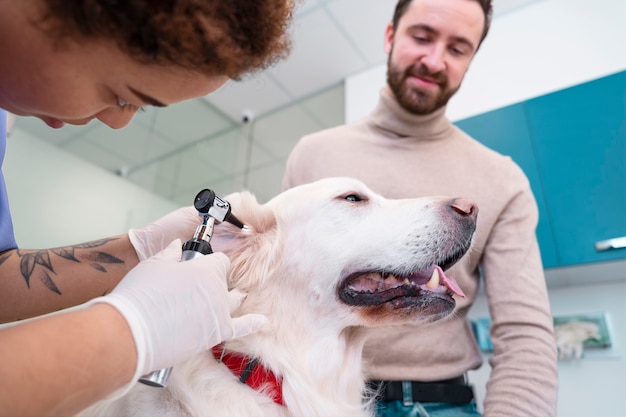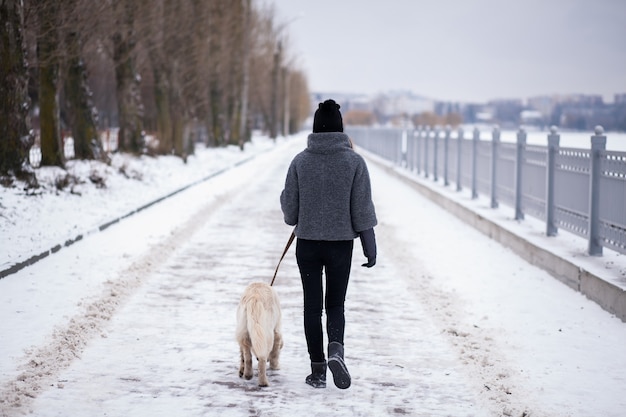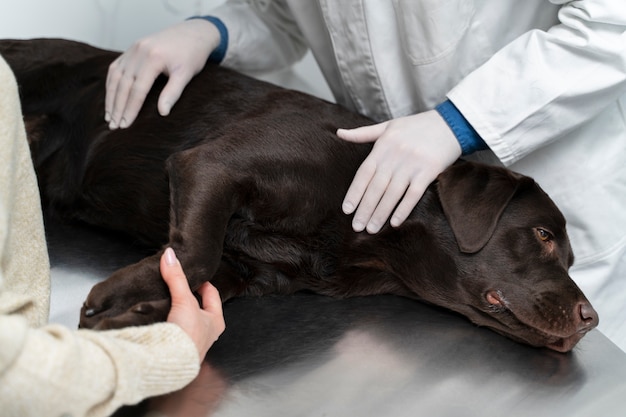Howl-O-Ween with Your Fur-ever Friends: A Spooktacular Safety Guide for Pet Parents

Halloween is a great time for family and friends — costumes, candy, parties and haunted fun — but it also brings many hidden hazards for our pets. To ensure your whiskered witches, pawsome pups, and critter companions stay safe, here’s our Pets4Life guide:
Candy Cravings & Toxic Treats — Don’t Let It Be a Trick!
You might think your pet wants “just a little nibble,” but many Halloween treats are pure pet poison:
- Chocolate contains chemicals which pets can’t metabolize well. Even a small amount can lead to vomiting, diarrhea, hyperactivity, tremors, seizures, or worse.
- Sugar-free candies and gums often contain xylitol, which can trigger dangerous drops in blood sugar, seizures, liver failure, and other dire consequences in dogs and cats. • Raisins and grapes — even a few — can cause acute kidney failure in dogs and cats.
- Candy wrappers, foil, and wrappers are tempting to chew and can lead to intestinal blockages or choking hazards.
- Glow sticks and glow jewelry may contain bitter or irritating fluids. If chewed or punctured, pets can drool, foam, or experience oral irritation.
It’s best not to give your pet any human Halloween treats and to store your candies in sealed, pet-proof containers. Instead, treat your pets to special pet-safe treats – Come to Pets4Life to find some great treats for your pets.
Costumes: Cute, But Be Cautious
- Costumes can be adorable, but your pet might not find them paw-sitive if they’re uncomfortable or unsafe. Here’s how to keep it fun, not frightful:
- Choose costumes that do not restrict movement, breathing, vision, or hearing. • Avoid costumes with dangling bits, strings, buttons, beads or snaps. If pets chew off small parts, they can ingest metals or cause blockages.
- Only dye or color your pet’s fur with products that are fully pet safe. Talk to one of our Pets4Life groomers if you want advice on how best to decorate your pet.
- Watch for stress signals: lip licking, tail tucked, freezing, trembling, hiding. If your pet is showing signs of discomfort, remove the costume immediately.
- Only leave the costume on short periods (for photos or fun) and supervise constantly.
Decorations, Candles & Strings — Spooky, But Snare-y
- Halloween decor can be delightful for us — but dangerous for pets. Keep a sharp eye (and paws) out for the following:
- Open flames in candles, jack-o’-lanterns and other decorations pose burn and fire hazards, especially when curious noses or tails get too close. Consider using battery operated LED candles instead of real ones, as they are much safer.
- Electrical cords and wires: pets, especially kittens and puppies, may chew on cords and suffer burns or shock. Hide or protect cords (ex: use conduit, cord covers). • Fake spiderwebs, tinsel, yarn, stringy decorations: these are dangerous if swallowed. They can cause entanglement or bowel obstructions.
- Pumpkins themselves are relatively non-toxic but rotted pumpkins or moldy parts can harbor bacteria or fungi. Also, chunks of rind can cause digestive issues or blockages if eaten.
- Fog machines and fog fluids may contain chemicals that irritate pet lungs or cause respiratory distress.
- Scented candles, incense, potpourri: strong scents and airborne particles can irritate pet airways (especially in cats or small pets). Pets4Life offers pet-safe candles to protect your pets from these potential issues.
- Some holiday decorative corn kernels or dried corn can be choking hazards and can block intestines if swallowed.
- Battery cells in toys or decorations are extremely dangerous if ingested — they can burn tissue quickly.
- Mothballs or potpourri beads used in fall decorations or scent displays can be toxic. • Plants: If you decorate with chrysanthemums or other fall flora, check whether they are safe for pets. Lilies and some seasonal plants can be toxic, especially to cats.
Door Dilemmas, Frights & Escape Risks
Halloween nights often mean many door openings, strangers in costumes, and unpredictable sounds — which can stress your pet and/or tempt a dash for freedom.
- Secure the perimeter: Keep pets in an interior room away from the front door during trick-or-treating hours.
- Double-check IDs: Make sure your pet’s collar, tags, and microchip info are current — in case they slip out in fright.
- Provide a safe, quiet zone: Give your pet refuge in a calm room with comforting items (such as bed, toys, blanket, soft music).
- Don’t force trick-or-treating: Most pets will find people in costumes, crowds and walking in the dark stressful. It’s often better for them to leave them home with a treat.
- Watch out for stressful behavior: panting, pacing, hiding, vocalizing, or accidents in the house may indicate fear or anxiety. Feel free to call our Pets4Life veterinarians if you need help with anxiety medication or calming products or strategies or stop by to check out our Ellevet and other products and talk to our vet staff. 847.434.2745
If Your Pet Eats Something They Shouldn’t
Even with great precautions, accidents happen. Here’s what to do:
- Don’t panic — stay calm so you can act quickly and clearly.
- Gather information — what did they eat, how much, when, any packaging or wrappers, weight and species of your pet.
- Call your veterinarian immediately or use a poison control helpline (like ASPCA Animal Poison Control Center or Pet Poison Helpline.) (888) 426-4435 or (855) -764-7661
- Do not induce vomiting unless directed by a professional. Sometimes that can do more harm than good.
- Monitor closely for symptoms like vomiting, diarrhea, tremors, lethargy, difficulty breathing, or unsteady gait.
- Have a plan — know where your nearest 24/7 veterinary hospital is located, just in case.
The sooner you act, the better chance your pet has at avoiding serious complications. Many Halloween-related pet poison calls spike during the season.
Pets4Life hopes that your Halloween is full of treats for you and your entire family, and we are here for you if you have any questions on how best to keep your pets safe and healthy.






